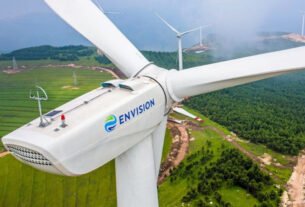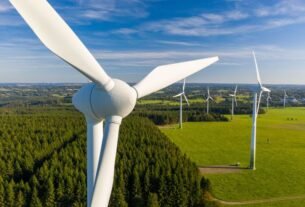SBI Capital Markets (SBICAPS) has released a comprehensive report on Energy Storage Systems (ESS) in India, exploring how global best practices—especially from China—can guide India’s battery energy storage system (BESS) market expansion.
🌏 1. Global Benchmarking & China’s Leadership
- China dominates the global ESS supply chain, producing over 97% of the 345 GWh total output in 2024. India currently lacks significant local LFP (lithium iron phosphate) battery production, which remains less common than NMC chemistry globally.
- Despite limited production of LFP, India must gradually build domestic battery capability—focusing on upstream integration of cell manufacturing and critical mineral sourcing. (turn0search0, turn0search4)
💰 2. How BESS Earns Revenue in India
- More than 60% of revenue in typical Indian BESS contracts comes from availability-based capacity payments (Rs/MW-month), while China’s market has broader revenue structures including ancillary services and energy arbitrage.
- India lacks robust day-ahead ancillary markets, limiting revenue stacking. Future tender designs should evolve to include capacity + arbitrage + ancillary revenues, as seen in China. (turn0search0)
📉 3. Battery Prices & Tender Economics
- Battery cell prices, which make up over half of BESS capex, have dropped from ~$115/kWh in December 2024 to near ~$55/kWh more recently—sharply improving investment viability.
- Viability Gap Funding (VGF) covering up to 40% of project cost is still needed to guarantee returns, but tariff sensitivity remains high in early stages. (turn0search4)
📈 4. Evolution of BESS Tenders & Technology Trends
- BESS project contracts are increasingly shifting from capacity-focused models to load-oriented designs like RTC (Round-the-Clock), Peak Supply, Load Following, and FDRE (Firm Dispatchable Renewable Energy).
- These contract types demand high availability during defined daily blocks and offer revenue premiums—attracting established power players due to higher IRR potential.
🧭 Summary Table
Focus Area | Insight |
Battery Manufacturing | India has negligible LFP cell production; China is the dominant source |
Revenue Model | India: Capacity payments; China: Ancillary + Arbitrage revenue too |
Cost Trends | Battery prices halved recently—capex falling |
Tender Evolution | FDRE/RTC tenders favor high availability & multiple revenue streams |
Policy & Ecosystem | Supports needed: VGF, PLI, incentives for indigenization |
✅ Bottom Line
SBICAPS concludes that for India’s BESS ecosystem to mature—especially to reach FY32 targets of 230 GWh—policymakers must learn from global markets. Key steps include:
- Encouraging domestic battery manufacturing (especially LFP)
- Introducing revenue stacking market mechanisms beyond basic capacity payments
- Maintaining policy incentives like VGF and PLI
- Promoting larger, hybrid storage-based renewable tenders to support grid resilience
These learnings can catalyze cost efficiencies, improve returns, and accelerate India’s energy storage capacity growth.




